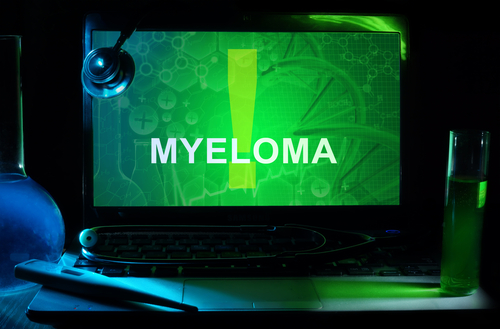Stem Cell Transplantation to Treat Myeloma Patients Highlighted in Studies
Written by |

Ajai Chari, MD, director of clinical research in the Multiple Myeloma Program at the Icahn School of Medicine at Mount Sinai in New York, and Navneet Majhail, MD, MS, director of the Blood & Marrow Transplant Program at Cleveland Clinic, recently shared their views and analyses of two studies investigating the role and timing of autologous stem cell transplantation (ASCT) as a standard care for myeloma patients.
The two studies, titled “Autologous Transplantation for Multiple Myeloma in the Era of New Drugs: A Phase III Study of the Intergroupe Francophone Du Myelome (IFM/DFCI 2009 Trial),” and “Autologous Transplantation Versus Cyclophosphamide-Lenalidomide-Prednisone Followed By Lenalidomide-Prednisone Versus Lenalidomide Maintenance in Multiple Myeloma: Long-Term Results of a Phase III Trial,” were recently presented at the 57th American Society of Hematology (ASH) Annual Meeting.
High dose chemotherapy plus autologous transplantation (ASCT) is the standard approach in newly diagnosed, transplant-eligible myeloma patients. However, the high success of treatment regimens such as combination treatment with bortezomib (Velcade), a proteasome inhibitor; lenalidomide (Revlimid,), an immunomodulatory drug; and dexamethasone, has led researchers to question the relevance of ASCT as an immediate treatment for patients.
Researchers aimed to determine if in this era of new drugs ASCT was still required as an upfront treatment in the initial management of young patients. The scientists conducted a randomized trial, which included 700 previously untreated myeloma patients, comparing conventional dosing treatment with only the three agents vs. the conventional triplet regimen plus early ASCT.
Results suggest that ASCT should remain a standard of care for young patients and that a combination drug therapy with ASCT could be a future treatment strategy. The primary study endpoint was progression-free survival (PFS), which was found to be superior for the early transplant group compared to conventional therapy across all age groups, risk status, and depth of response. Despite a better PFS in the transplant arm, 61 percent vs. 48 percent, researchers did not see a difference in overall survival (OS). Chari commented on two major flaws in the study: “The results were released from the Intergroupe Francophone Du Myelome, and the investigators stopped lenalidomide after one year,” he said, stating the importance of considering variance in practice patterns before generalization of results. “That’s important because in the U.S., clinicians usually treat with lenalidomide until progression.”
Chari also noted the lack of investigation of indefinite maintenance therapy and supported the need for continued enrollment in the American cohort of this clinical trial. “There’s also a lot of interest in frontline therapies being quadruplet regimens, not just triplet,” he said.
In the second study, researchers compared consolidation with high-dose melphalan plus ASCT vs. triple therapy with cyclophosphamide-lenalidomide-dexamethasone, and then maintenance with lenalidomide-prednisone (RP) vs. lenalidomide alone. PFS and OS were significantly better in the transplant arm, with median PFS at 43.3 months with melphalan and transplant vs. 28.6 months with the drug combination. OS at four years was 86 percent vs. 73 percent.
“Even in the era of novel agents for multiple myeloma, offering autologous stem cell transplantation should continue to be part of the treatment strategy for these patients outside the context of a clinical trial,” Majhail said. “There are ongoing clinical trials addressing the question of early vs. a delayed transplant. What these abstracts highlight is outside of enrolling patients on both kinds of clinical trials, you should refer these patients for an autologous transplant as a part of their upfront treatment.”






